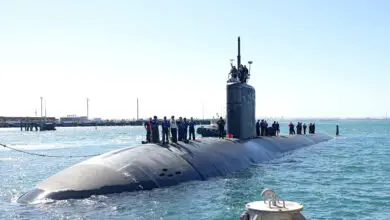Small Diameter Bomb integration and sustainment contract increases to $100 million
The modification involves foreign military sales to Australia, Belgium, Canada, Denmark, Greece, Israel, South Korea, Netherlands, Spain, Sweden, Turkey and Singapore
Boeing was awarded a $35 million contract for Small Diameter Bomb Increment I glide bomb integration, sustainment and support for foreign military sales customers, the U.S. Department of Defense said in a release.
The modification of an April indefinite-delivery/indefinite-quantity contract (FA8681-19-D-0009) brings the total cumulative face value to $100 million, the Friday, May 31 release said.
Work will be performed in St. Louis, Missouri, at U.S. Air Force test ranges worldwide, and various other countries, and is expected to be complete by April 15, 2029.
The modification involves foreign military sales to Australia, Belgium, Canada, Denmark, Greece, Israel, South Korea, the Netherlands, Spain, Sweden, Turkey, Singapore, and “any other future country with an approved letter of offer and acceptance.”
The April 15 notice said the contract “provides for integration, sustainment and support of the Small Diameter Bomb Increment I miniature munition and carriage system on various Foreign Military Sales aircraft platforms,” adding that the support includes testing, engineering, management, technical, and logistics.
In January 2018, Boeing was awarded an almost $194 million contract to produce 6,000 Small Diameter Bombs for the U.S. Air Force and for Saudi Arabia, Japan, Israel, the Netherlands, South Korea, and Singapore.
Last September, Boeing was awarded a $14 million U.S. Air Force contract for GBU-39 Small Diameter Bomb I “focused lethality munition production assets,” a contract that provided GBU-39 A/B weapons as well as shipping/storage containers.
Precision stand-off strike capability
The GBU-39 Small Diameter Bomb is a 250-pound precision-guided glide bomb with a stand-off range of more than 40 nautical miles (74 km). It uses a GPS-aided inertial navigation system to attack fixed or stationary targets.
The system is designed to enable aircraft to carry a higher number of smaller, more accurate bombs. Many U.S. Air Force aircraft can carry a pack of four GBU-39 SDBs in place of a single 2,000-pound bomb. The GBU-39 was launched from F-22s to strike Taliban drug factories in Afghanistan in November 2017.
The GBU-39B/B Laser Small Diameter Bomb variant integrates the JDAM’s semi-active laser, enabling the bomb to hit targets moving at up to 80 km/h (50 mph). It has been fielded by the U.S. Special Operations Command since 2014, and in December 2017, Boeing was awarded a $10.5 million contract to produce Laser Small Diameter Bombs for the U.S. Air Force.
In November 2017, the Department of Defense said General Atomics was awarded a $17.5 million contract to integrate the Laser Small Diameter Bomb onto the MQ-9 Reaper drone, but the following day it published a correction, saying the contract “has not yet been awarded.” The integration of the weapon would give the Reaper a 75-km stand-off weapons capability and further reduce the U.S. Air Force need for more expensive and dangerous manned missions.
A third variant – Raytheon’s GBU-53/B Small Diameter Bomb II, recently rebranded “StormBreaker” – can only be carried by the F-15E and F-22, although the F-35 will be able to carry the weapon after a 2022 software upgrade. It adds a tri-mode seeker that enables radar and infrared homing, as well as semi-active laser guidance, and reportedly features target recognition.
In June 2018, Raytheon was awarded a $93 million contract to integrate Small Diameter Bomb II/StormBreaker on F/A-18E/F aircraft and was expected to be completed by July 1, 2023.
In February 2018, Raytheon was awarded a $77 million low rate initial production contract for 570 SDB II Lot 4 munitions, along with a similar range of containers and captive vehicles, and that December, Raytheon was awarded $141 million for 1,260 SDB II Lot 5 munitions, as well as containers and trainers.












One Comment